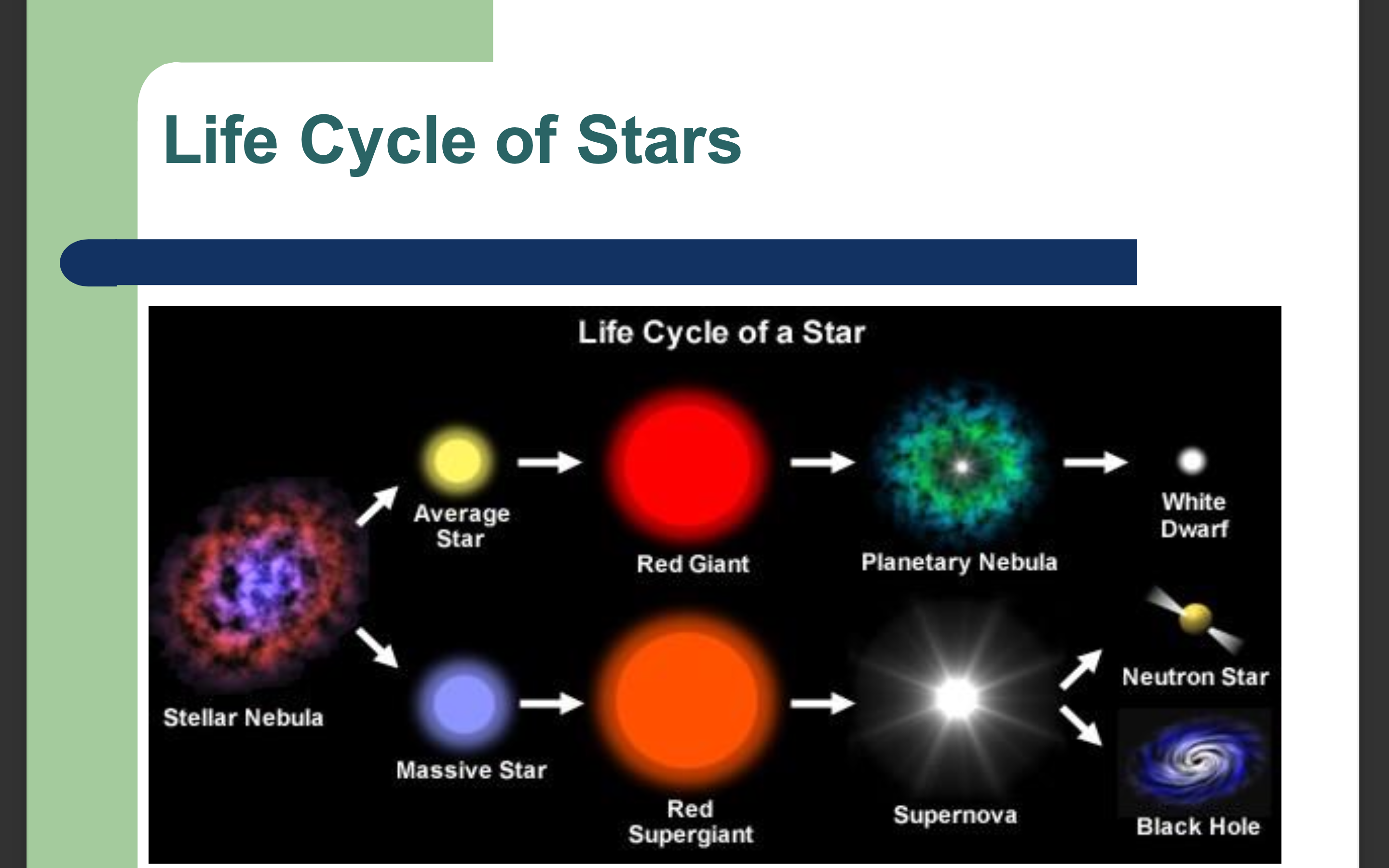The changes a star goes through is determined by how much mass the star has.
Two types of life cycles:
Average star: a star with relatively low mass
Massive star: a star with relatively high mass
STELLAR NEBULA :
All stars begin in a cloud of gas and dust called a stellar NEBULA.
Gravity will cause the nebula to contract. The nebula will break into smaller pieces. These pieces will eventually form stars.
PROSTARS :
Protostar – after a few million years, the gas forms into a disk with a small dense core.
THE LIFE OF AN AVERAGE STAR:
- An Average Star (low mass star) is condensed in a nebula and begins a nuclear reaction that causes hydrogen to form helium, releasing energy in the form of heat and light.
- A low mass star will stay in this MAIN SEQUENCE phase for a long time, until it begins to use up all of it’s hydrogen.
RED GIANT :
- Towards the end of it’s MAIN SEQUENCE phase, a star begins to burn all of its hydrogen.
- The outer layers will collapse, become heated by the core and expand out forming a red giant.
PLANETRY NEBULA:
- The star begins to quickly blow off its layers forming a cloud around the star called a planetary nebula.
- The star in the center of the nebula is very hot but not very bright.
WHITE DWARF:
- When a star has burned all it’s fuel it will collapse under the pressure of gravity.
- The white dwarf that forms is very small and dense.
Life of a massive star:
STELLAR NEBULA:
- All stars begin in a cloud of gas and dust called a stellar NEBULA. Gravity will cause the nebula to contract.
The nebula will break into smaller pieces. These pieces will eventually form stars.
MASSIVE STAR:
- Stars with more mass than the sun (high mass stars) burn their hydrogen faster than low mass stars, so their MAIN SEQUENCE phase is much shorter.
- These stars burn hotter and brighter than low mass stars.
RED SUPERGIANT:
- When the high mass star burns off it’s hydrogen its outer layers begin to expand rapidly.
- Temperatures at the core are much higher than a red giant. Nuclear fusion causes elements to combine into an iron core at amazing speed
SUPERNOVA:
- The iron core collapses on it’s self under the intense gravity at very high speeds.
- The energy released is called SUPERNOVA.
NEUTRON STAR OR BLACK HOLE:
- After the incredible release of energy from the SUPERNOVA a dense core (1 trillion times denser than a white dwarf) is all that remains of the Massive Star.
- If the mass is too dense it will continue to collapse on itself forming a black hole. The gravitational pull of a black hole is so great, light can not escape.
